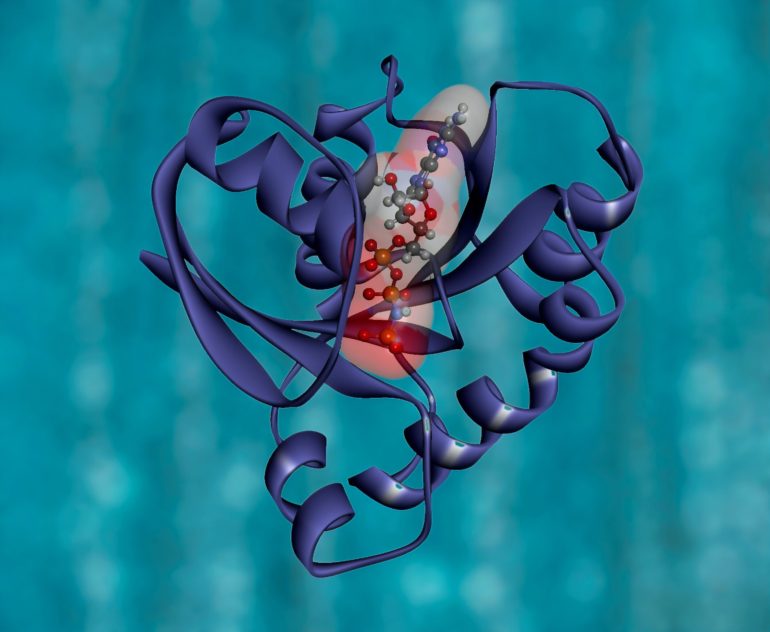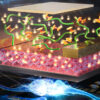Scientists have established a new method to image proteins that could lead to new discoveries in disease through biological tissue and cell analysis and the development of new biomaterials that can be used for the next generation of drug delivery systems and medical devices.
Scientists from the University of Nottingham in collaboration with the University of Birmingham and The National Physical laboratory have used the state-of-the-art 3-D OrbiSIMS instrument to facilitate the first matrix- and label-free in situ assignment of intact proteins at surfaces with minimal sample preparation. Their research has been published today in Nature Communications.
The University of Nottingham is the first University in the world to own a 3-D OrbiSIMS instrument. It is able to facilitate an unprecedented level of mass spectral molecular analysis for a range of materials (hard and soft matter, biological cells and tissues). The facility in Nottingham also has high pressure freezing cryo-preparation facilities that enable biological samples to be maintained close to their native state as frozen-hydrated to complement the more commonly applied but more disruptive freeze drying and sample fixation. When the surface sensitivity, high mass/spatial resolution are combined with a depth profiling sputtering beam, the instrument becomes an extremely powerful tool for 3-D chemical analysis as demonstrated in this recent work.
Dr. David Scurr from the University of Nottingham’s School of Pharmacy led this latest study and was supported by Ph.D. student Anna Kotowska. David said: “The design and innovation of the next generation of biomaterials is underpinned by the ability to accurately characterize biological tissue and materials. The challenge for scientists in this area has been unpicking the chemical complexity of such systems. This approach to protein analysis has been demonstrated using extreme examples to illustrate its sensitivity and specificity by chemically mapping a protein monolayer (protein biochip) and distribution of specific protein in human skin (complex multi-layered biological system) respectively. With the ability to chemically map proteins in this way we are a step closer to being able to understand fundamental biological processes and develop more effective systems for targeting drugs and providing coatings for medical devices.”
The team in Nottingham have already applied biomaterials research to create a new type of urinary catheter in partnership with Camstent Ltd that is coated in a bacteria resistant material discovered by scientists from the University of Nottingham.
Professor Morgan Alexander is director of the EPSRC Programme Grant in Next Generation Biomaterials Discovery and the 3-D OrbiSIMS facility, he said: “The research we are now able to do using this instrument is paving the way for step changes in how materials can be used in medicine to better treat disease and illness. The Catheter coating we have developed in partnership with Camstent has gone all the way from the discovery of a new class of materials that no one could have predicted all the way to clinical trials and is a great example of the application of this type of research.”
Paula Mendes, Professor of Advanced Materials and Nanotechnology at the University of Birmingham, adds: “With these new capabilities to characterize proteins at surfaces comes also new exciting opportunities to engineer functional materials with predictable protein interactions for biosensor technology”.
Biomaterial immune control discoveries could reduce implant rejection
More information:
Nature Communications (2020). DOI: 10.1038/s41467-020-19445-x
Provided by
University of Nottingham
Citation:
New protein imaging method paves way for next generation biomaterials and tissue analysis (2020, November 17)
retrieved 17 November 2020
from https://phys.org/news/2020-11-protein-imaging-method-paves-biomaterials.html
This document is subject to copyright. Apart from any fair dealing for the purpose of private study or research, no
part may be reproduced without the written permission. The content is provided for information purposes only.



